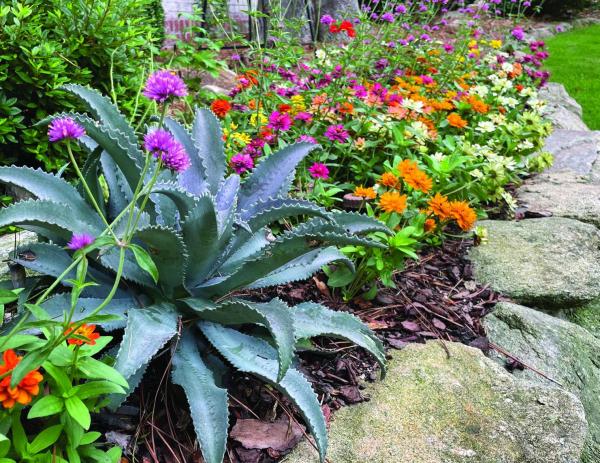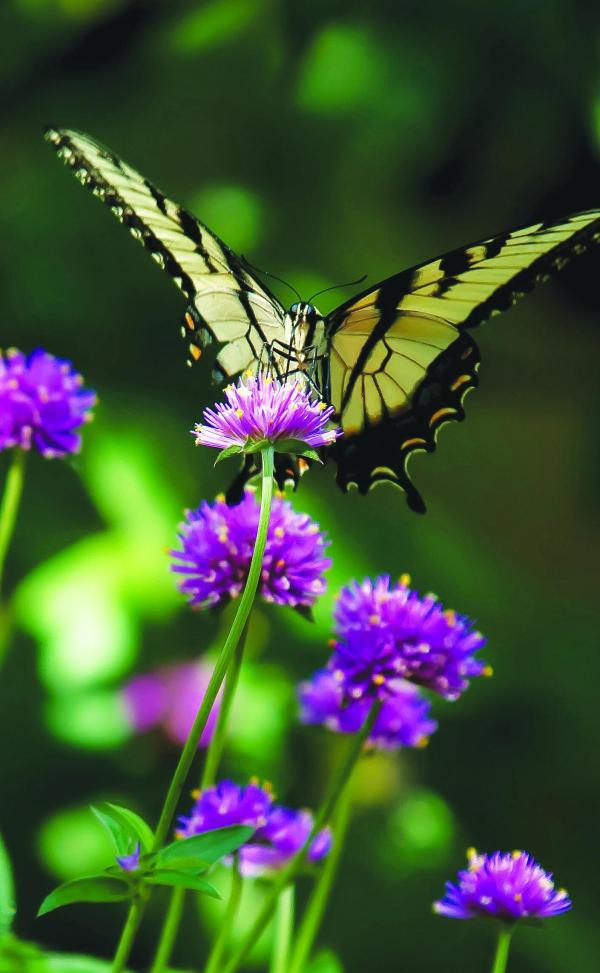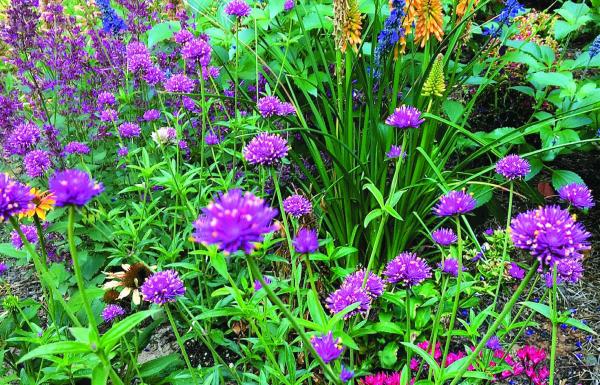Awards pile up for Truffula Pink Gomphrena
Flame Proof, Perfect Score All Season, Leader of the Pack and Top Performer are just a few of the award designations for Truffula Pink Gomphrena. It has now taken in 50 such trophies. If your state has a flower trial competition, my guess is Truffula Pink has been a winner. I also believe that the number of trophies will continue to mount.
If you don’t know Truffula Pink, it is a globe amaranth. It is almost always grown as an annual that reaches about 24 inches tall and almost as wide. You can’t give it too much sun. It is possible it might be perennial in zones 9 and warmer. I live in 8a and had a patch that was perennial for me for a couple of years; I’ll explain its demise.
I planted it in 2019, and it returned in 2020 and was awesome. I never realized I planted it in conjunction with a chipmunk thoroughfare. In 2021, my grand-dog Alli, a 120-pound Dutch Shepherd, came to live with me for a year. In her attempt to rid the area of chipmunks, the Truffula Pink area became pulverized. Today, the chipmunks live happily and have found new joy in torturing Tootie the Bichon.
This year, in a way, seemed like a second coming-out party. It wasn’t with fanfare, but if you had your eyes open, you probably muttered a “holy wow” once or twice. One such moment was no doubt at Mississippi State University’s industry day at the Truck Crops Branch Experiment Station in Crystal Springs, MS. Right out in the full scorching summer sun of central Mississippi was Truffula Pink gomphrena standing stately over this year’s hot new Augusta Lavender heliotrope. The lavender blue and hot pink were a perfect partnership. It was very much a “Why didn’t I think of that?” moment.
Those moments kept occurring for me, thanks to my son, James. Before I could tell him he couldn’t, he was partnering Truffula Pink with Mangaves like Thunderbird and Silver Fox. If you aren’t familiar with Mangaves, they are hybrids between Manfreda and Agave. These come with a warning: if you start you will not be able to stop. Just go to Mad About Mangave on Google and enter at your own risk.
So, let’s visit the idea or concept: can you plant Truffula Pink with a plant that looks like it belongs in a Mexico desert? Sure, add some zinnias and angelonias or summer snapdragons and it will look like ‘Sunday Tea at Miss Betsy’s’ house. Any design you have in mind, Truffula Pink will make it better.
I would like to think I broke the mold a little. It wasn’t pushing the envelope by planting with Mangave, but I used them in a prairie like look with the new Meant to Bee Royal Raspberry and Queen Nectarine agastache and Pyromania Blaze kniphofia or torch lily and Rockin’ Playin’ the Blues salvia. I was mesmerized by the planting, and just like every other year, Truffula Pink has been a butterfly champion, bringing in Buckeyes, American Ladies and an assortment of swallowtails. The Garden Guy makes this promise: Truffula Pink will be among the most enjoyable flowers you will ever grow whether it is an annual or perennial.
Follow me on Facebook @NormanWinterTheGardenGuy for more photos and garden inspiration.






